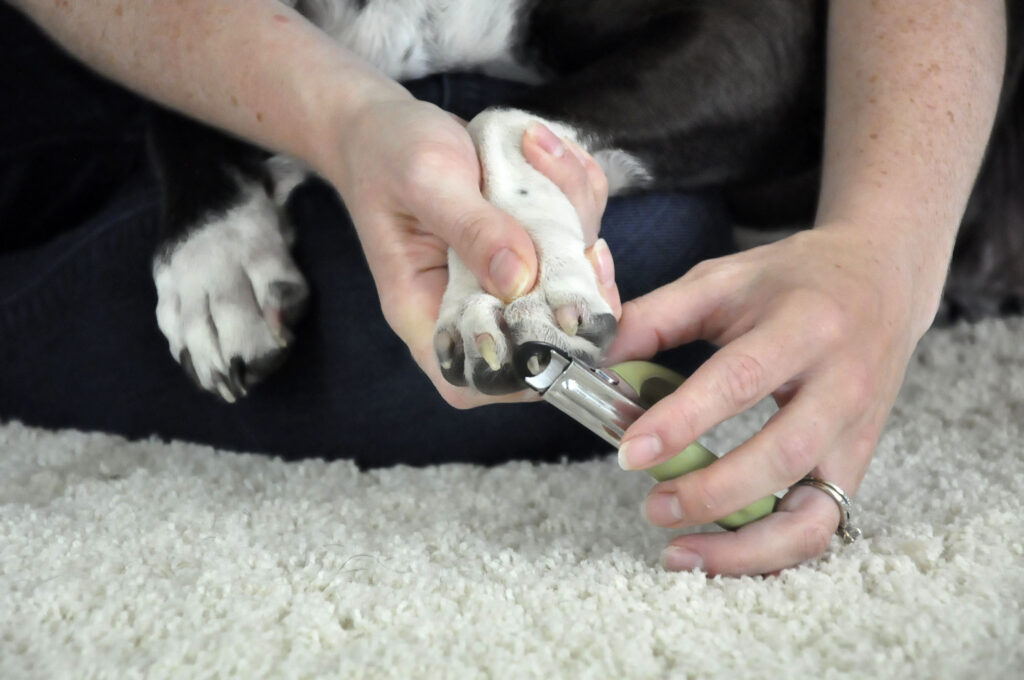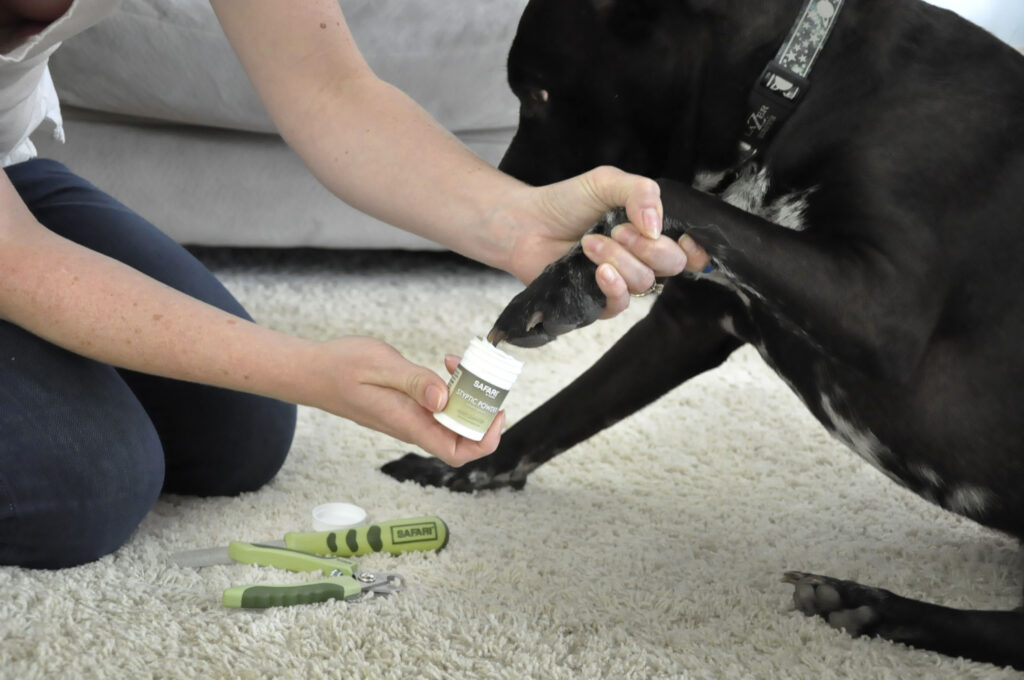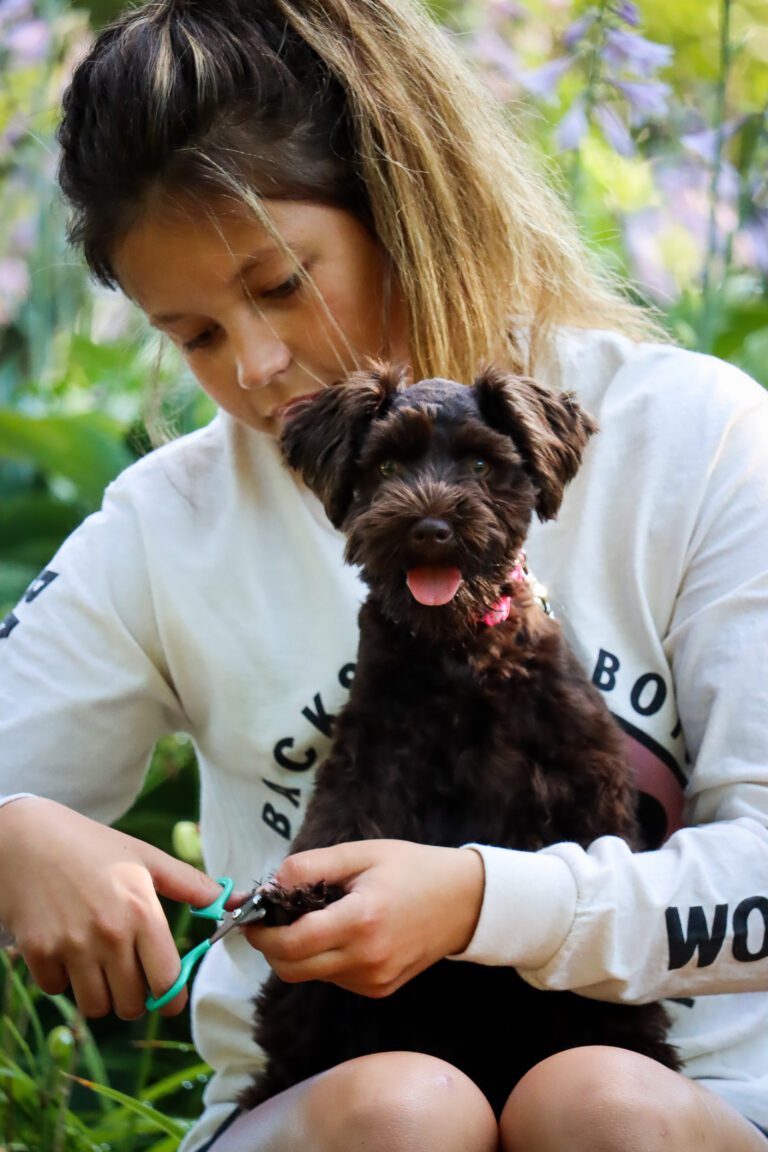If you can hear a dog’s nail clicking on the floor, that is an excellent indication it is time for a nail trim. Dog’s nails should be clipped every two to six weeks depending on the dog’s breed and lifestyle. Here are six tips that will help make the nail grooming process as easy and smooth as possible for the dog and groomer.
1. Start Young
Dogs that never had their nails clipped at a young age, or only intermittently, may be afraid. Especially when you throw in nail grinders that can make a lot of noise.
To avoid having an adult dog afraid of having his nails clipped, remind clients of the importance of acclimating the dog at an early age.
This can be done by handling the puppy’s feet on a regular basis. Play with his paws and squeeze his toes gently. Reward him with praise or treats for staying calm.
Once the puppy is used to having his feet handled, introduce him to the grooming tools. Owners can do this at home with their own set of tools, or slowly introduce them at the grooming salon.
When the owner thinks the puppy is ready for his first nail trimming, remember you should start small. Clip just the tiniest tip on one toenail. Reward him for good behavior and move on. The dog’s reaction can guide your progress. If he seems totally fine with it after the first one or two times, move on to full trimmings. As always, be sure to provide lots of praise and treats for his good behavior.
Over time, the puppy will learn there’s nothing to be afraid of. And, even better, that getting his nails done means he is on the receiving end of lots of love and treats.

2. Choose the Right Trimming Tool
Choosing the right dog nail trimming tool is essential to making the entire process smooth and easy. But how do you know whether a dog needs a scissor- or guillotine-style clipper? Or maybe a nail grinder? Or a doggy version of an emery board?
The first thing to know before choosing a nail trimming tool is that no matter which style you select, it must be the right size for the dog’s nails and the right size for your hand. Choose the wrong size and, at best, you might give a dog a lousy manicure. At worst, you can injure a dog’s sensitive feet.
Scissor-style nail clippers can also be used on bigger dogs and those with thick nails, but you’ll need some decent hand strength to do the work.
Another good choice for small or medium dogs is a guillotine-style clipper. With these, you slip the nail through the hole, then simply slice off the tip. Guillotine-style clippers also come in larger sizes to fit medium to large dogs. An advantage of the guillotine-style clipper is that it’s usually spring-loaded, thereby requiring less force to make a cut than scissor-style clippers. The downside is there’s no safety features to prevent accidents.
While you can use a guillotine-style clipper on big dogs, you can also opt for a nail grinder when it’s time to trim a big dog’s thick nails. As with all tools, be careful using a grinder. The upside to grinders is, if used properly you can make very small incremental nail trimmings. The downside is sometimes those incremental filings means the entire process of using a grinder can take longer, which for some dogs can be stressful. Plus, you need to be careful about friction burns.
Manual nail files are similar to dog grinders in that they slowly file away at the nail rather than clipping. The process is entirely manual and can be time-consuming.

3. Take Your Time
Getting through a nail trimming session with a dog is not a race. In fact, the faster you go, the more likely you are to make a mistake. Take your time. Multiple small cuts to each nail may be better than trying to get the entire nail all at once and risk cutting too much.
4. Have a Light Source
To minimize the chances of an accidental cut to a dog’s quick you need a steady hand and a lot of light. Being able to see clearly is the best way to avoid accidents, especially if the dog’s nails are dark and you have to keep an eye open for the white circle that indicates you’re approaching the quick.
Some grinders come with a built-in light to help, but even so, we’d still recommend avoiding spots with dim lighting while nail grooming.

5. Keep a Blood Clotter Nearby
Accidents happen, and even as a professional dog groomer you will nick a dog’s quick from time to time. Having a blood clotter on hand (such as styptic powder) lets you handle the situation quickly. You can also look for a clotter that disinfects and numbs the pain, in addition to stopping the bleeding.
6. Be Patient
More than just taking it slow, groomers need to remember to be patient with the dogs. Not all dogs will always be comfortable with having their nails trimmed. In some cases, like with high-energy dogs, sitting still for 30 minutes might be too much. Be prepared to give the dog breaks in between trimming nails to let them relax.
Try to understand the experience from the dog’s point of view, then respond in a way that will make it better for him, not you.






